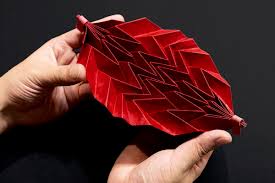折り
紙は、1
枚の
紙を
折って、
鶴や
花、
動物などを
作ります。
Origami is the art of folding paper to create shapes like cranes, flowers, and animals.
どもから
大人まで
楽しむことができます。
Origami is suitable for both children and adults.
り
紙は、
平安時代に
贈り
物を
包むために
使っていました。
Origami began in the Heian period and originated from people using paper to wrap gifts.
に
なると、
遊びや
教育のために
広がって、
今のような
折り
紙になりました。
In the Edo period, origami gradually spread as a tool for play and education, and developed into the form of modern origami.
り
紙には、
形を
作るだけではなく、
気持ちを
入れる
意味もあります。
Origami is not just about shaping paper; it also carries the meaning of expressing emotions.
えば、
病気が
治るようにとか、
平和な
世界に
なるようにと
願って、
千羽鶴を
折ります。
For example, people fold a thousand paper cranes to wish for recovery from illness or for world peace.
る
人の
気持ちが
紙に
入って、もらった
人の
心を
温かくします。
The feelings of the person folding origami are infused into the paper, warming the heart of the person who receives it.
り
紙は、
想像する
力や
集中する
力を
育てることができます。
Origami helps to develop imagination and concentration.
は、
数学や
科学の
研究にも
使っています。
Recently, origami has also been applied to research in mathematics and science.
に
行く
人工衛星のパネルや、
医療の
道具の
設計に
使っています。
Design solar panels for space satellites and medical devices.
り
紙は、
日本の
文化の
象徴と
言えるでしょう。
Origami can be considered a symbol of Japanese culture.

